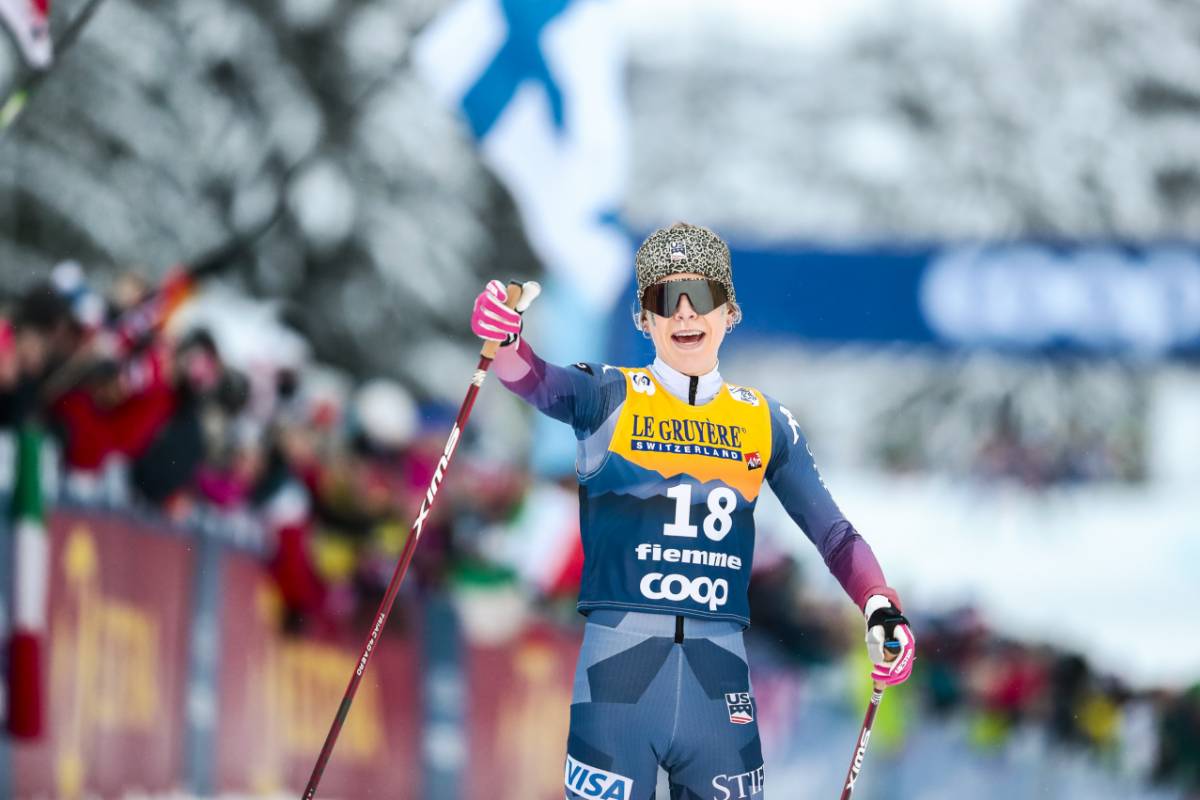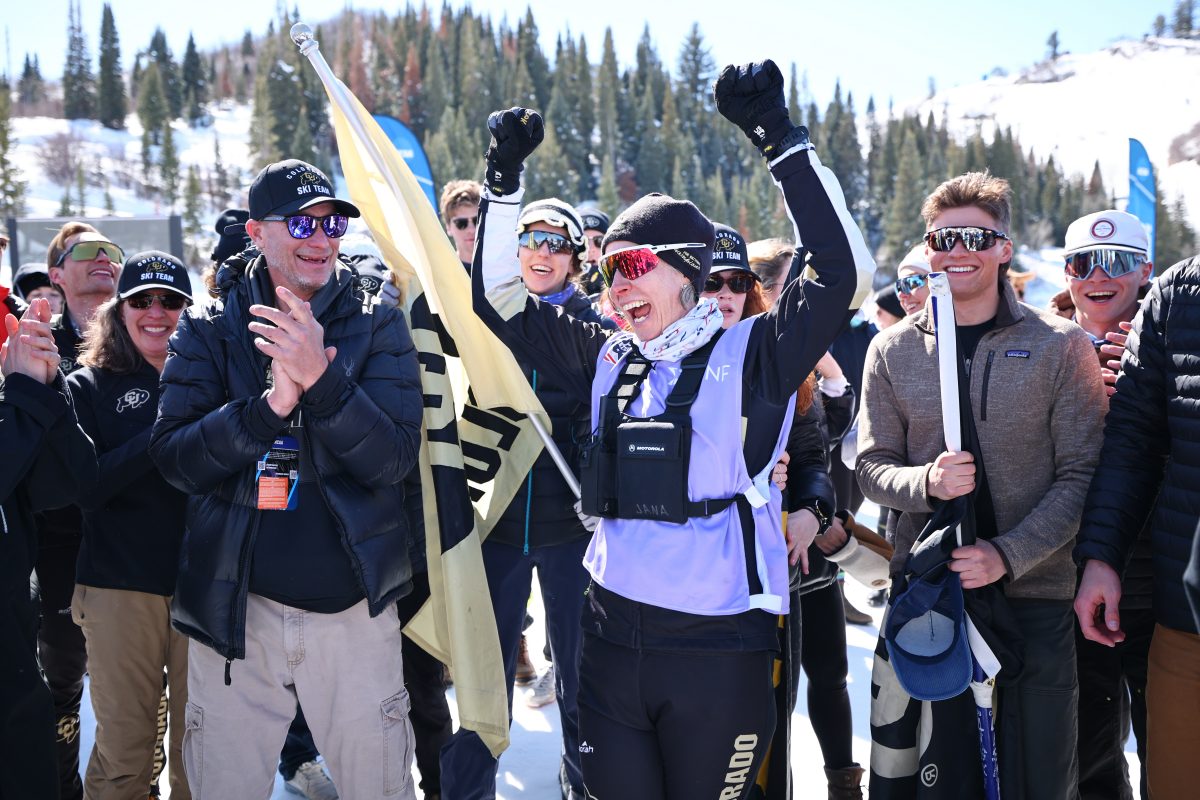
When talking about women’s ski jumping in 2012, it’s impossible not to frame the discussion within the context of the sport’s long fight to be recognized as an event worthy of inclusion at the Olympics. Lindsay Van and Co.’s failed 2009 legal battle against the Vancouver Games captured the attention of the mainstream media as a strikingly medieval story for the twenty-first century.
It was announced in the spring of 2011 that women’s ski jumping would finally be included in the 2014 Games in Sochi, Russia, and the International Ski Federation held the inaugural women’s World Cup circuit last winter. Remarkably, or perhaps fittingly, its overall winner had not been part of the original fight to bring her sport to the highest international stage — she had been in the middle of high school at the time.
That 2012 crystal globe-winner is 17-year-old Sarah Hendrickson, who picked up ski jumping in Park City, Utah, at the age of seven when the sport was still thirteen years away from being an Olympic event. Of course, that fact hardly mattered to Hendrickson at the time; “When you start a sport at that age, you continue doing it because you love it,” she said.
In less than ten years, however, Hendrickson was competing at the highest international level. At the inaugural World Championship event in 2009, when she was 15, she placed 29th. In 2010 she won bronze at World Juniors at podiumed four times on the Continental Cup, which was then the only international circuit that existed for women. In 2012, she handily won the World Cup overall and led the U.S. women to the Nation’s Cup title. This fall, she graduates high school.
Injury forced Hendrickson to take a break from the usual round of competitions this summer. She had surgery to fix microfractures in her knee in April and has spent the off-season recovering and finishing up school. As a result, the sequel to her storybook 2012 is largely a question mark. The season starts in Lillehammer, Norway, on November 24. Just a few weeks before her departure for Europe, we asked Hendrickson a few questions.
FasterSkier: First of all, thanks for fitting in this interview into your last month of high school. How has the summer and fall been?
Sarah Hendrickson: Good. Right now I’m obviously trying to finish high school; I graduate in November. The training season this summer is kind of winding down, and I’m looking ahead to [a few weeks] from now when we have our first World Cup. We just got snow today, so I can’t believe its already happening again.
FS: How’s your knee?
SH: I spent my whole summer recovering; it was an extensive surgery as far as recovery-time goes and I didn’t jump for six months. So while I was doing rehab I was focusing on school. I’ve been jumping for about a month now, so that’s all good.
I first injured it in the summer of 2011 and it bothered me throughout this winter. It wasn’t super painful but I knew it wasn’t going to get better and it was definitely the best year to get the surgery done. Basically it’s called microfractures. The knee is common place to get injured. It’s more of an overuse thing, and is definitely pretty vulnerable in ski jumping world.
FS: Let’s talk about last season. Now that you’ve had a few months to think about it, what stands out as the most memorable part?

SH: Well, going into the winter season before that first World Cup, I hadn’t compete all summer again because I had school. I’d decided to stay home while the girls went over to the summer competitions. So going into that first World Cup I had no idea what to expect. I knew I was jumping well but I didn’t know how that compared with girls from around the world. So I just put on my skis and jumped like I’d been training and obviously it was good enough to win and I was super pumped.
People were like, ‘Oh, is it your goal to win the overall?’ And, you know, it was one comp. We still had 13 more; who knows what was going to happen. After that I came back home for Christmas and then went back to Europe for two and a half months, which was pretty crazy; I’d never been on the road for that long and especially for a 17-year-old that’s pretty intense. I didn’t know how my body was going to react, and ski jumping is a huge mental game so I had no idea what to expect.
Every day I just kept having fun showing up to the hill, each World Cup I got into a rhythm of it, and every day was super memorable and looking back onto the season I had so much fun.
FS: At what point did you think you could win the overall?
SH: I don’t know. Like for me, I set my goals pretty high but I never really voiced them just because I don’t want to be disappointed. I have one teammate who’s also the same age as me. And she said, you know, ‘Have you seen the globe? That could be you. You could have that.’ And we kind of had like an inside thing; we’d say that to each other. But I never really would say it to reporters or anything.
I guess when I got wind I’d finalized it in Japan. It was one of the comps where it was one jump and the weather wasn’t good enough to take a second, and I was in second place [for the comp] and I had created a big enough point distance between me and the next girl that no matter what happened in the next two comps I had still won the overall. And I remember riding down the chairlift from that second jump we didn’t get to take, then my teammates hugging me and realizing that I had gotten it and it was so cool.
We won the nations cup too, which is a huge accomplishment and pretty cool to share with the girls you spend so much time with. We’re really close, like sisters basically, traveling the world together.
And then I started up my senior year in April and I went to school all summer. Which was actually kind of nice because I couldn’t jump, so I had something to focus on.

FS: Do you feel like your life has changed a lot since?
SH: No, nothing too out of the ordinary. Ski jumping’s not that popular in the US, but I don’t want glory or fame or anything, I like to go under the radar.
FS: In the context of your teammates’ fight to get the sport included at the Olympics, and this winter being the first year there was a World Cup, is last season that much more memorable?
SH: I was a little bit too young for that [fight]. Kudos to the older girls for that; they went up to Vancouver, and Lindsay’s been fighting for that forever. That might have been my first year I started going to Europe for the continental cup circuit.
FS: Was the absence of Olympic-level competition something you ever thought about as you were starting out in ski jumping?
SH: I started skiing age of 2; I born and raised in Park City and my parents were both big skiers, and then in 2002 when the Olympics came to town that kind of intrigued me. I’d been skiing for so long I decided to try it, and also my brother Nick did it. He started when he was 8, I started when I was 7. So I kind of followed in his footsteps. I was sick of watching him do it and I wanted to try it. So I tried it one year, and never looked back.
Starting at that young age when you start a sport, you continue doing it first because you love it. You don’t think about the money or the sponsors when you’re that young. You really have to love it. And as time progressed I realized it wasn’t an Olympic sport and there were some struggles you had to deal with but I couldn’t step away from it. I loved it way too much.
FS: Do you feel like the level of competition is rapidly improving now?
SH: Oh, yeah. Just looking over the past four years since when I started, there’s this huge gap. So much has progressed. We have 70 girls now that are at the level maybe 20 girls were at four years ago. It’s really growing. Getting added to the Olympics helped us — there’s interest with sponsors, it’s just going to keep growing in the years to come and it’s awesome to see.
For the men there’s a lot of attention in Europe; they make a lot of money and national governing bodies fund their teams. The girls are getting the recognition they deserve slowly. We were televised last year which is a huge help and I think it’s all part of the process of a growing sport.
FS: What are your goals this season?
SH: It’s hard to say. Going into this first period I honestly don’t know, I haven’t competed since March with the surgery. I’ll just go in like I did last year; do what I do and assess what’ll happen for the rest of the winter.
As far as results go, I don’t really know. It’s definitely not going to be easy to get the overall again. It’s also a World Championships year, so that’s obviously going to be a big focus. I’ve never really done well at World Champs, so that’s one of my main goals. It’ll be really nice to medal there. I have another year at World Juniors; I’ve gotten silver and bronze there, so winning that would be a huge accomplishment.
We still have this season and one more summer before the Olympics, which is crazy to think. Anything can happen between now and then, nothing is guaranteed. So we’ll just get through this season and see how that carries into the next.
Audrey Mangan
Audrey Mangan (@audreymangan) is an Associate Editor at FasterSkier and lives in Colorado. She learned to love skiing at home in Western New York.



